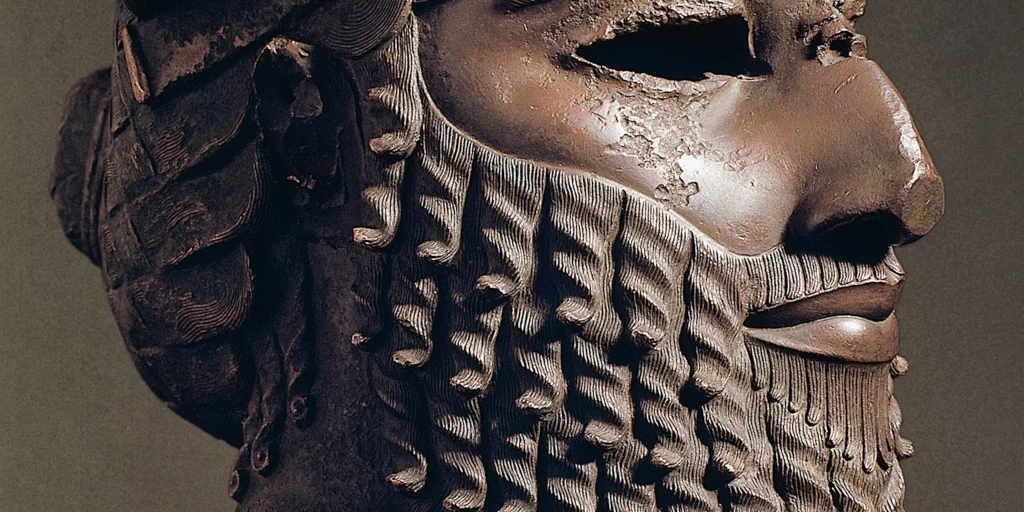Teflon, the non-stick coating commonly found in cookware, is famous for its slippery properties and ability to withstand high heat. Put the word “Teflon” in front of a name, and it evokes the image of someone elusive, immune to arrest, and impervious to criminal charges.
These characteristics perfectly describe John Gotti, the man famously known as “Teflon Don.” John Gotti was one, if not the most, notorious American mobsters in history. Gotti was the head of the Gambino crime family in New York City.
Not even Teflon Don could avoid charges forever, though. John Gotti would spend the last years of his life serving time for murder.
There is so much more to the story of John Gotti, his cruelty, rise to power, and unexpected public fame. In this article, we’ll discuss the convoluted story of John Gotti and his rule of one of America’s biggest mafia families.
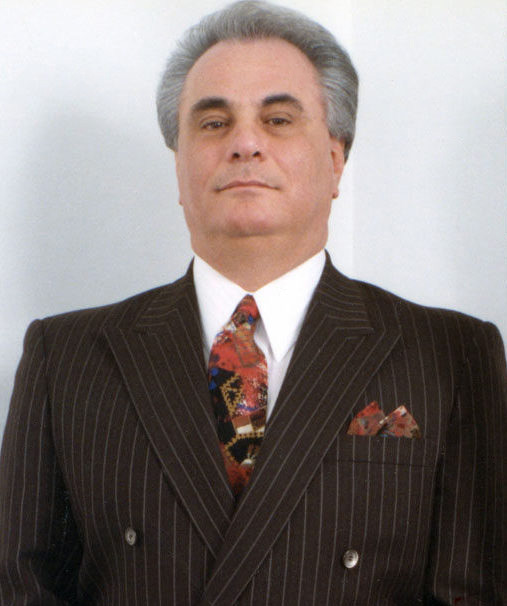
The Early Life of John Gotti
John Gotti, full name John Joseph Gotti Jr., was born on October 27, 1950, in the South Bronx, New York City. His mother, Philomena DeCarlo, and father, John Joseph Gotti Sr., had thirteen kids together, two of whom died at birth. John Gotti Jr. was the fifth of the thirteen.
The Gotti family struggled with poverty in New York City. This made crime tempting for the young John Gotti.
His neighborhood was heavily influenced by mafia activity, and he already had a few relatives working for the mob even when he was young. His father, a part-time day laborer, never made enough to feed the enormous family and it led to a lot of resentment among all the Gotti children growing up.
As the years passed, John Gotti showed early signs of his future in the mafia. By 12, he was skipping school regularly, and he had dropped out completely by 16.
During this time, he also made his first connection with mafia-adjacent street gangs. This made it easy for him to find a place among one after he dropped out.
Marriage and Attempt at a Normal Life
In 1958, John Gotti met the woman who would become his wife–Victoria Dimaggio. While there is very little information about the private Victoria before her marriage to Gotti, FBI files indicate that she may have been married previously.
Victoria was half-Italian and half-Russian and would keep a low profile even as her husband rose to fame. That fame wasn’t immediate, either. When she first married John Gotti in 1962, they weren’t living the high life quite yet.
John Gotti worked a few normal jobs after marrying his wife, but it just never seemed to pan out. He had a talent for crime. Despite multiple arrests, he found that he had much more success there than he did with legitimate work.
The couple would have five children together:
- John A. Gotti III– Also known as Junior, John A. Gotti would be his father’s successor in the world of organized crime.
- Victoria Gotti– John Gotti’s oldest daughter, Victoria thrived in the public eye and would end up being a television star and write about her life as a mafia daughter.
- Frank Gotti– Frank, or Frankie Gotti lost his life at the young age of 12, forever changing John and Victoria Gotti. John Gotti would later go on to be accused of putting out a hit on the man who accidentally killed Frankie.
- Peter Gotti– Peter Gotti preferred a quieter life and stayed out of the spotlight for most of his life until he was called upon to take over as the boss of the Gambino family once John III was arrested.
- Angela Gotti– Like Peter, Angela has lived a very private life, to the point that only limited information is available about her.
John Gotti’s Life as a Young Gangster
Since he had been running with gangs since he was a teenager, it wasn’t hard for John Gotti to fall back on crime when regular work ran short. He fell in with a local gang known as the Fulton-Rockaway Boys and rose to a leadership position there while still in his teenage years.
At that time, John’s life of crime mostly consisted of petty thefts and street fighting. However, it wouldn’t be long before he started to engage in more lucrative criminal activity.
He was charismatic and driven. By the time the late 1950s rolled around, John Gotti was on his way to glory.
Hierarchy in the Gambino Crime Family
To understand Gotti’s rise in the Gambino mafia, you first have to understand the somewhat complicated hierarchy of positions within the family. Here is a brief explanation, starting from the lowest-ranking members to the highest:
- Associate: Individuals associated with the mafia but who haven’t been formally initiated yet
- Soldiers, or Made Men: The lowest rank of fully initiated members of the Gambino family.
- Caporegime/Captain, or Capo: A member who is in charge of a group of soldiers and controls a designated territory.
- Consigliere: An advisor to the underboss and boss, usually some sort of strategist for the family.
- Underboss: The second-in-command.
- Boss: The highest-ranking member in the Gambino crime family.
John Gotti’s Rise Within the Gambino Crime Family
At first, Gotti was an errand boy for higher-ups in the family, namely Carime “Charley Wagons” Fatico.
He would rise from errands to carjackings quite quickly, stealing trucks and other vehicles from Idlewild, now John F. Kennedy, airport. The money he made with these jobs was much better than what he had been making before.
It also put him in contact with important people in the Gambino family that would help shape his future. Most important of these people was John Gotti’s future mentor, underboss Aniello Dellacroce.
The position of “underboss” was an important one. His association with Dellacroce put Gotti closer to the head of the family than ever before.
His upward momentum was halted when, in 1968, Gotti was arrested twice for his airport-related crimes. He would eventually end up being sentenced to three years for them.
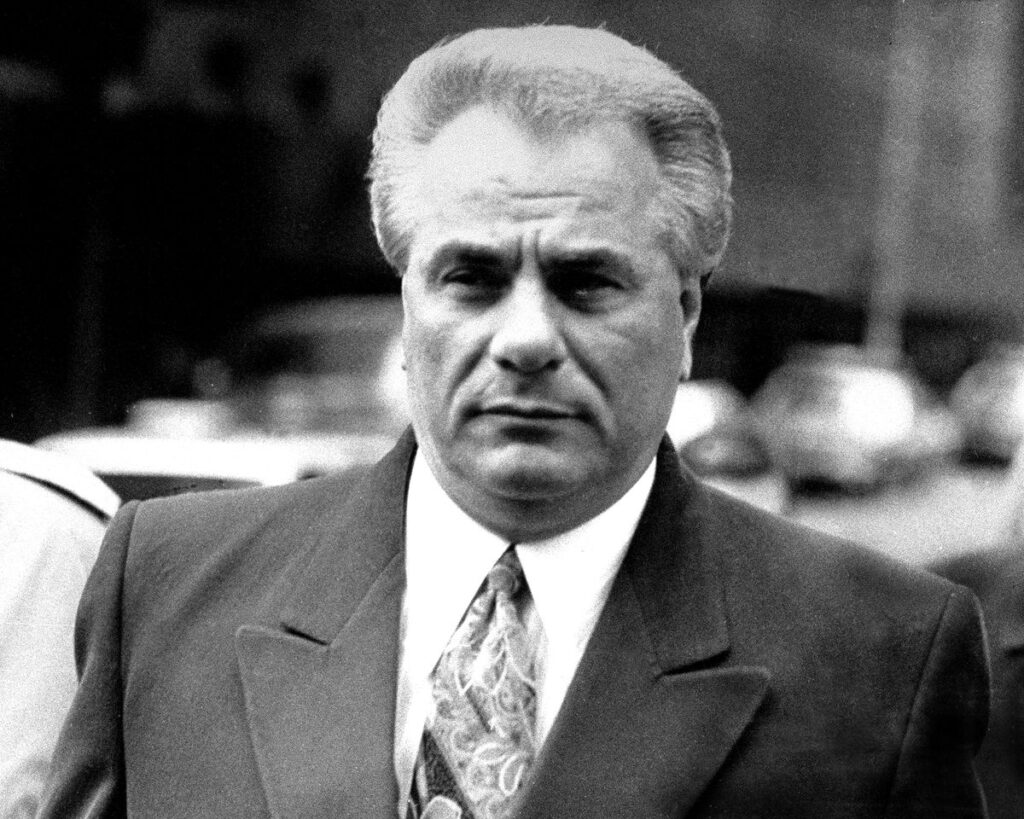
In 1972, Gotti was paroled from jail and immediately made his way back into the good graces of his associates. Soon enough he was working under Fatico again and would take the job of enforcer for the popular family hangout, the Bergin Hunt and Fish Club.
While the Gambino family wasn’t initiating new members at the time, Fatico announced that Gotti would be the acting capo for the area. This put Gotti into closer contact with underboss Dellacroce, and the two men struck up a friendship.
Not long after, Gotti would be assigned to his first hit. The manslaughter charge would land him more jail time, but cement his position with the Gambino crime family.
The Murder of James McBratney and Promotion to Capo
By 1973, Carlo Gambino was the reigning boss of the Gambino crime family. His nephew, 29-year-old Emanuel Gambino had been kidnapped and subsequently murdered, and Carlo needed a team of men to enact revenge.
Among those men was John Gotti. The family knew who killed Emanuel–a man named James McBratney. The hit wasn’t supposed to be public or messy.
The team would “arrest” McBratney while disguised as officers and execute him in secrecy. Instead, the abduction spiraled out of control, and McBratney was shot and killed in full public view.
While Gotti didn’t pull the trigger, he was identified by eyewitnesses and sent to jail for four years.
By the time Gotti was out of jail, Carlo Gambino had died, naming his successor as Paul Castellano instead of the suspected next-in-line, underboss Dellacroce. In 1976, Gotti would officially be initiated into the family as the capo of the Bergin crew.
Gotti was a runaway success, becoming the highest earner for Dellacrocse. His crew pulled off the Lufthansa Heist, stealing over 5 million dollars, making it the biggest cash robbery in American history at the time.
The Death of Frank Gotti
Life wasn’t all success for John Gotti during his initial rise to power. Tragically, on March 18, 1989, his 12-year-old son Frank Gotti was hit and killed by a neighbor riding a minibike. The family was devastated.
The man riding the minibike, John Favara, tried to come by the Gotti residence to apologize but was met with violence. Surprisingly, it wasn’t John Gotti who attacked him, but instead Victoria Gotti with a baseball bat.
Favara would later be abducted and is presumed dead by the hand of one of Gotti’s soldiers, although no remains have ever been found.
The Murder of Paul Castellano and Taking Over the Gambino Family
Tensions were high within the Gambino family with two main factions emerging–those loyal to Castellano and those who believed that Dellacroce should have been promoted to boss in his place.
These tensions were cranked even higher when, in 1985, Dellacroce died after a battle with cancer. Castellano named his own new underboss instead of promoting Gotti into the position. He snubbed Dellacroce one last time by refusing to attend his wake.
This was the nail in the coffin for John Gotti–he was going to kill the boss.
At John Gotti’s command, a group loyal to Gotti ambushed Castellano and his crew outside of Sparks Steak House. Gotti’s assassins managed to kill Castenello and his underboss, Thomas Bilotti.
Across the street, in his car, was John Gotti, watching to make sure the assassination went as planned. Within minutes, his competition was dead, and the position of boss was ripe for Gotti to take.
Briefly, Gotti and two other high-ranking members of the Gambino family acted as boss, but everyone saw the writing on the wall. It was well known that Gotti had issued the hit on Castellano, and on January 15, 1986, he was officially promoted to boss.
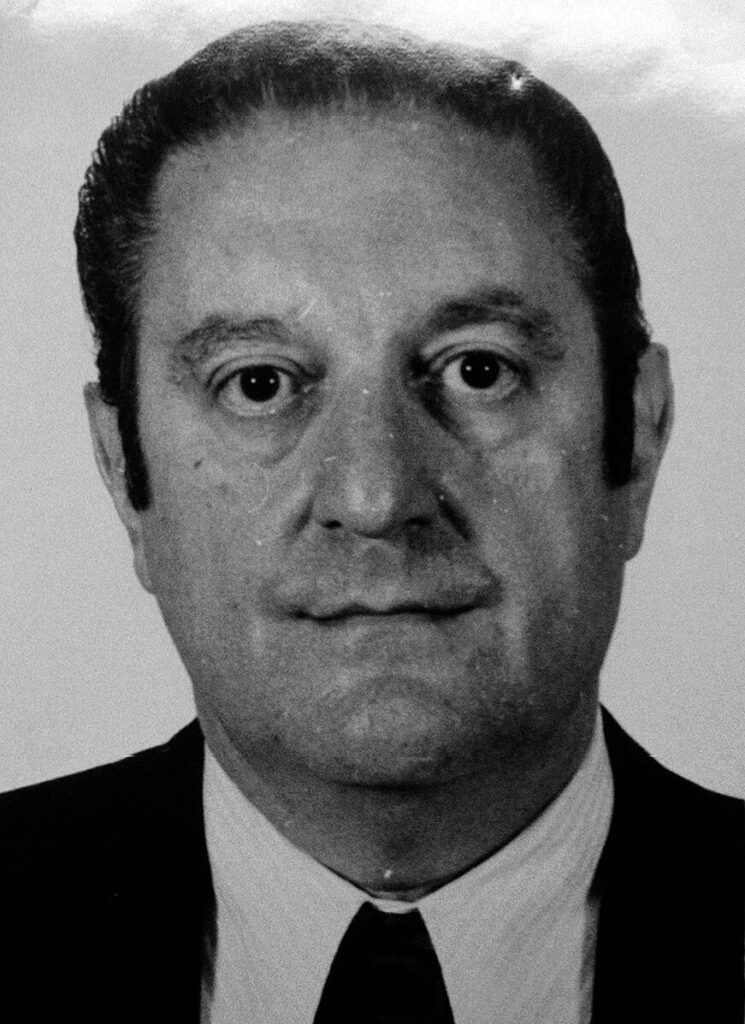
“Dapper Don” and “Teflon Don”
The mafia was always somewhat in the public eye, but John Gotti took it a step further. His flashy lifestyle, designer clothes, and larger-than-life personality made him a media sensation. He was a sort of celebrity, and his life as a mafia boss fascinated the public.
Gotti had two nicknames that he was commonly referred to in the press–”Dapper Don” concerning his sharp dressing and expensive suits, and “Teflon Don”, for his uncanny ability to avoid conviction in a slew of high-profile trials.
But Teflon Don couldn’t avoid arrest forever. Even as the boss of the Gambino crime family, the long arm of the law would reach him soon enough.
Conviction, Imprisonment, and Death
John Gotti rose to be one of the most dangerous mafia bosses of all time, but his time in the sun would end in 1992. That year, Teflon Don would finally have charges stick, and he would be convicted of five murders, racketeering, and conspiracy to murder.
John Gotti was sentenced to life in prison without the possibility of parole and would spend the rest of his life behind bars.
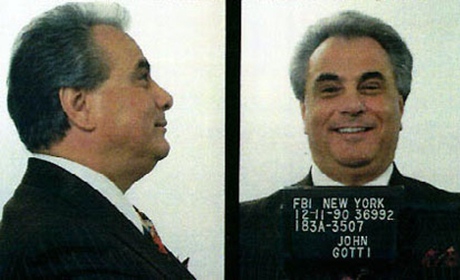
How Many Kills Did John Gotti Have?
While Gotti never got his hands dirty by killing himself, he often ordered hits that were carried out by his underlings. When he was sentenced to life in prison, he was found guilty of five murders:
- Paul Castellano
- Thomas Bilotti
- Robert DiBenardo
- Liborio Milito
- Louis Dibono
Who Took Over After John Gotti Died?
For a time, John Gotti ran the Gambino family from jail. However, he needed a man on the outside to make sure that his will was being enacted.
The obvious choice was his son, John Gotti III. Unfortunately for the Gotti family, John Gotti III was convicted of racketeering himself in 1999 and went to prison.
After that, younger son Peter Gotti took over. Peter was not a successful boss, and would only lead the family from 2001 to 2003. During this time John Gotti III passed away, and Peter lost control of the family when he too was sent to prison.
Who Runs the Gambino Family Now?
According to the website Five Families of New York, the acting boss of the Gambino crime family is currently Domenico Cefalù. Cefalù’s street boss is Lorenzo Mannino, who takes care of more day-to-day issues than the boss himself.
What Did John Gotti Pass Away From?
John Gotti passed away from throat cancer on June 10, 2002. He had been diagnosed in 1998 and underwent treatment for multiple years before his death.
References
“John Gotti”
https://www.fbi.gov/history/famous-cases/john-gotti
“Current Leadership Charts of the Five Families”
https://www.fivefamiliesnyc.com/p/current-leadership-of-five-families.html
“Lufthansa Heist”

